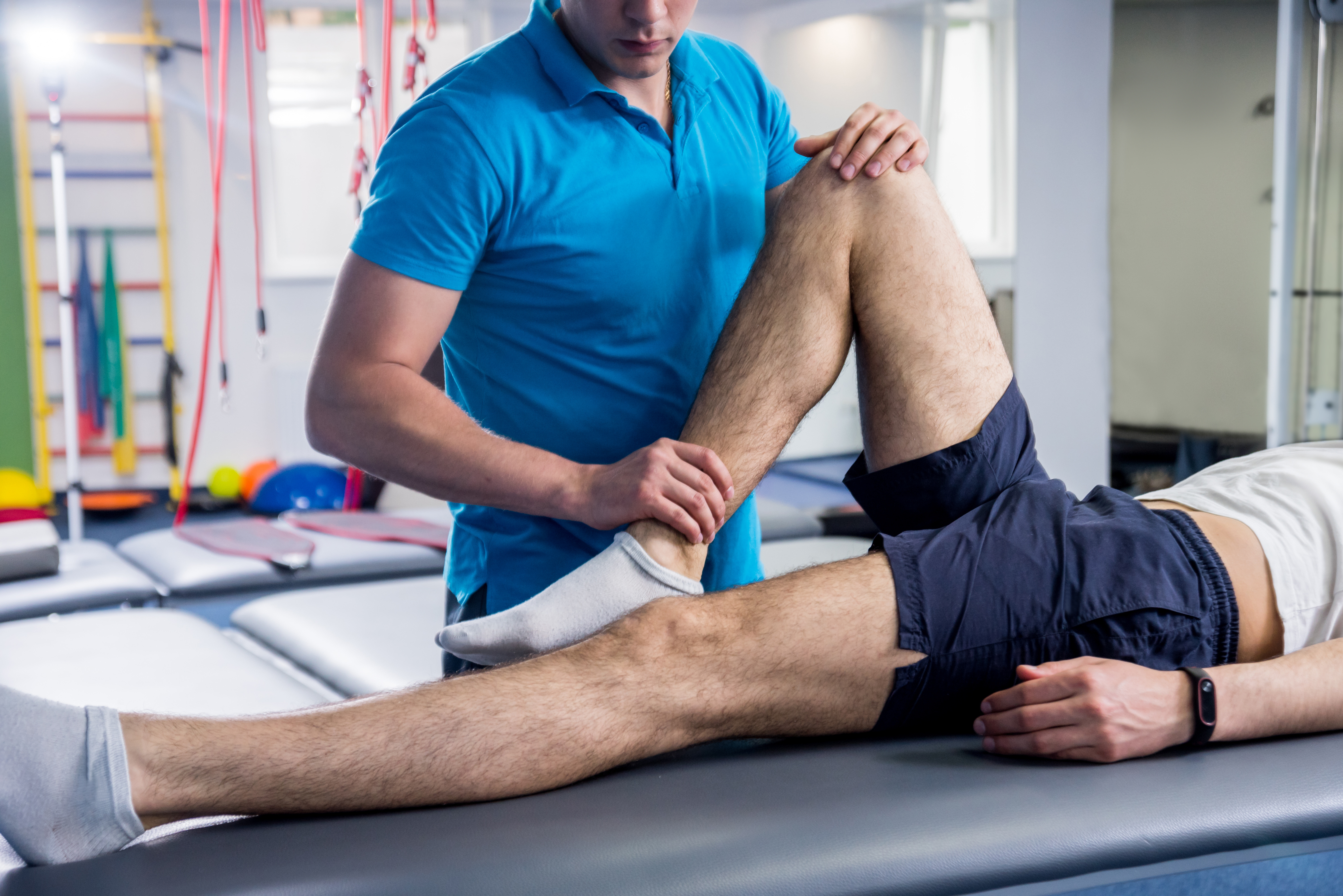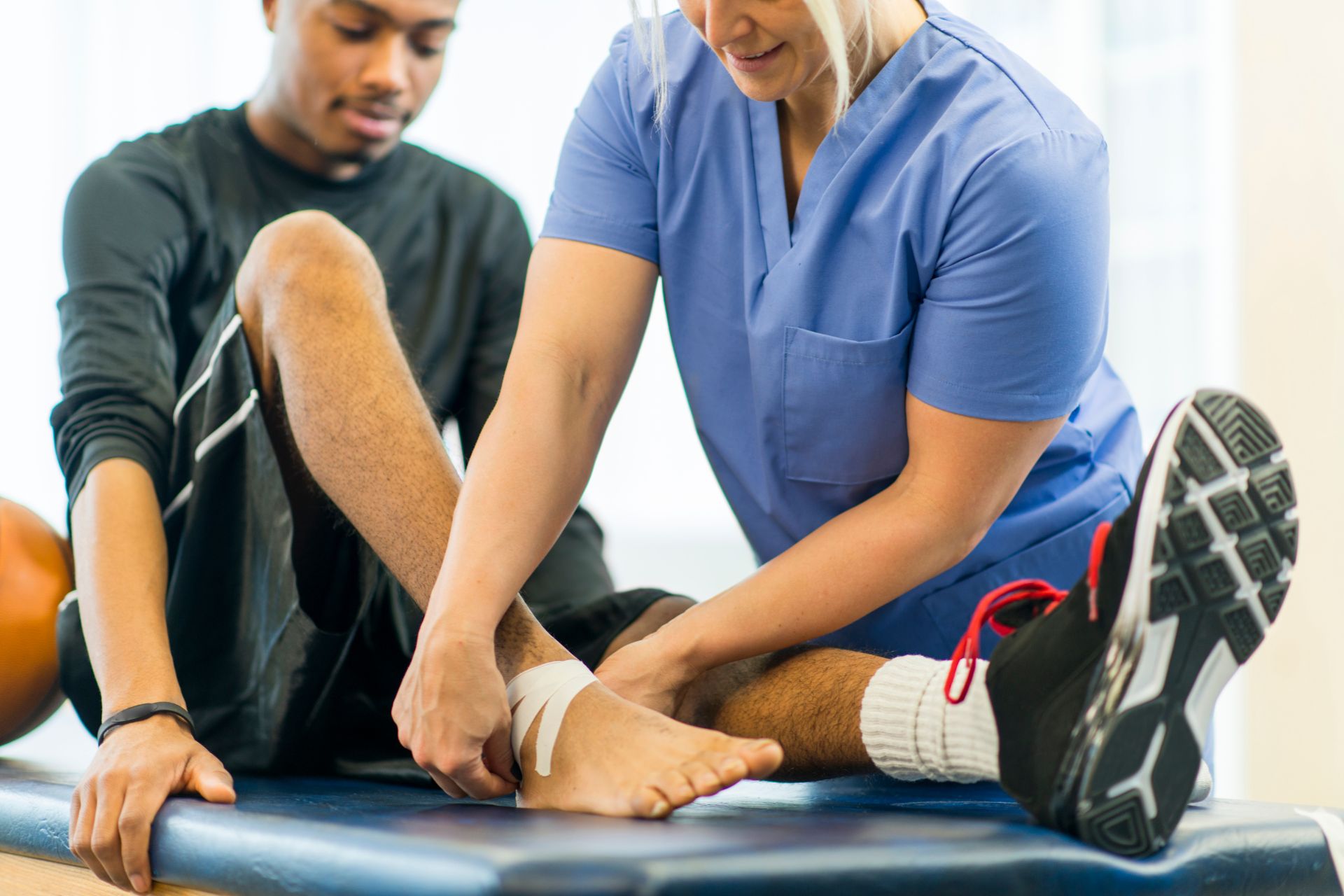Frequently Asked Questions
Rehabilitation protocols for ligament sprains vary significantly based on the severity of the injury, classified as Grade I, II, or III. For Grade I sprains, which involve mild stretching and microscopic tears, the focus is on reducing inflammation through RICE (rest, ice, compression, elevation) and gradually restoring range of motion with gentle stretching and strengthening exercises. Grade II sprains, characterized by partial tears, require a more extended period of immobilization with a brace or splint to allow for healing, followed by progressive weight-bearing activities and proprioceptive training to enhance joint stability. In contrast, Grade III sprains, involving complete tears, often necessitate surgical intervention, especially in high-demand athletes, followed by a comprehensive rehabilitation program that includes immobilization, controlled mobilization, and advanced functional exercises to restore full strength, proprioception, and neuromuscular control. Throughout all grades, the use of modalities such as ultrasound or electrical stimulation may be employed to facilitate healing, while a gradual return-to-sport protocol ensures the prevention of re-injury.
In the acute phase of ligament sprain rehabilitation, proprioceptive exercises are typically limited to gentle, non-weight-bearing activities to minimize inflammation and pain, focusing on neuromuscular re-education and joint position sense. As the patient progresses to the subacute phase, proprioceptive training becomes more dynamic, incorporating weight-bearing exercises such as balance board activities and single-leg stands to enhance joint stability and sensorimotor control. During the chronic phase, proprioceptive exercises are further intensified, integrating sport-specific drills, plyometrics, and agility tasks to restore full functional capacity and prevent re-injury. Throughout all phases, the emphasis on proprioceptive feedback, kinesthetic awareness, and mechanoreceptor activation is crucial for optimizing rehabilitation outcomes and ensuring a safe return to activity.
Cryotherapy plays a crucial role in the initial phase of rehabilitation for ligament sprains by reducing inflammation, minimizing pain, and controlling edema. The application of cold therapy, such as ice packs or cold compresses, leads to vasoconstriction, which decreases blood flow to the injured area, thereby limiting the inflammatory response and swelling. This reduction in tissue temperature also slows down nerve conduction velocity, providing analgesic effects that alleviate discomfort and pain associated with the sprain. By mitigating the acute inflammatory process, cryotherapy helps prevent secondary tissue damage and facilitates a more effective healing environment. Additionally, the use of cryotherapy in the acute stage of a ligament sprain can enhance the range of motion and improve functional outcomes by reducing joint stiffness and muscle spasms. Overall, cryotherapy is an essential component of the RICE (Rest, Ice, Compression, Elevation) protocol, promoting optimal recovery and rehabilitation in the early stages of ligament injury management.
During the intermediate phase of ligament sprain recovery, the intensity and type of strength training exercises should be carefully adjusted to promote healing while preventing re-injury. This phase typically involves a gradual increase in load and complexity of exercises, focusing on restoring range of motion, enhancing proprioception, and rebuilding muscular strength around the affected joint. Isometric exercises can be introduced initially to maintain muscle engagement without excessive joint movement, followed by isotonic exercises that incorporate controlled concentric and eccentric contractions. Resistance bands and light weights can be utilized to progressively challenge the muscles, while ensuring that movements remain within a pain-free range. Balance and stability exercises, such as single-leg stands or wobble board activities, are crucial for improving joint stability and neuromuscular control. It is essential to monitor the patient's response to increased activity levels, adjusting the intensity based on any signs of swelling, pain, or discomfort, to ensure a safe and effective rehabilitation process.
Progression from the functional phase to return-to-sport activities in ligament sprain rehabilitation requires meeting several criteria to ensure the athlete's readiness and minimize the risk of re-injury. These criteria include achieving full range of motion and demonstrating adequate joint stability, which are essential for functional performance. The individual must exhibit sufficient muscular strength, endurance, and proprioception, as these factors contribute to dynamic stability and neuromuscular control. Pain and swelling should be minimal or absent, indicating that the healing process is on track. Functional testing, such as hop tests or agility drills, should be performed to assess the athlete's ability to handle sport-specific movements without compensatory patterns. Psychological readiness, including confidence in the injured limb, is also crucial for a successful return to sport. Additionally, the rehabilitation program should have progressively incorporated sport-specific drills to prepare the athlete for the demands of their particular sport. Meeting these criteria ensures a comprehensive approach to rehabilitation, reducing the likelihood of recurrence and promoting optimal performance.

